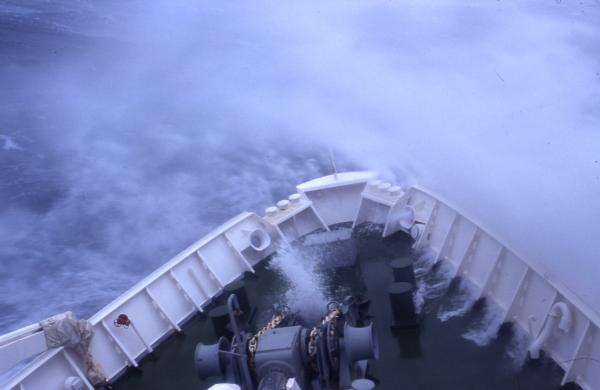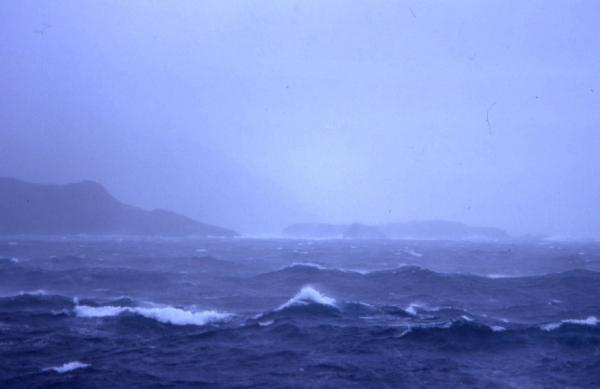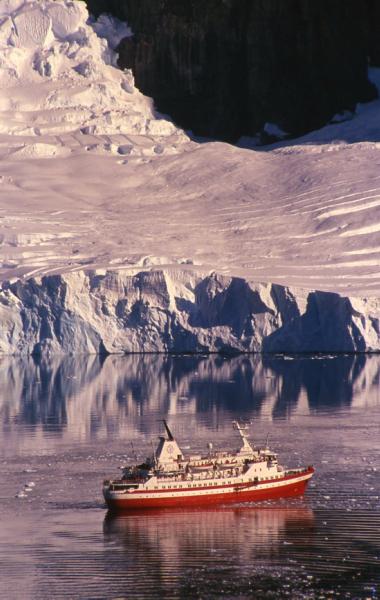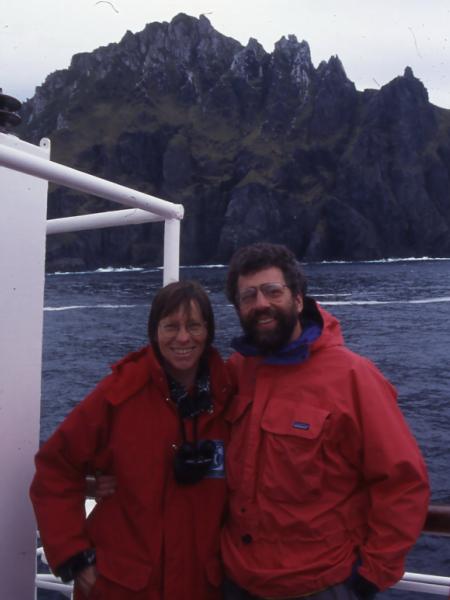Published in the Ocean Watch column, Honolulu Star-Advertiser © Susan Scott
November 30, 2007
When I heard on my car radio last week that the 250-foot-long Antarctic expedition ship, Explorer, had hit an iceberg and was going down, I pulled over and shed a tear.
Not for the people aboard — all were safely evacuated.
No, my sorrow was for the loss of the ship itself. The little red ship, as it was affectionately called, gave me some of my life’s greatest thrills.

Craig worked as the ship’s doctor, and I worked wherever I was needed (nurse, naturalist, writer, crew) on six Explorer voyages. I met the wildlife of my dreams, walked in the footsteps of explorers and made lifelong friends.
But even those remarkable moments pale compared with one: sailing on the Explorer through a hurricane.
We were crossing the Drake Passage, on our way to Ushuaia, Argentina, from the Antarctic Peninsula, when the captain, Leif Skog, showed us a weather fax. Three low-pressure areas were heading toward one another, and the ship was near the expected convergence.
“We’re going to have a storm,” Leif said quietly.
Soon the wind and waves began to rock the ship. The crew tied ropes as handholds to help people cross open spaces, but in a few hours the seas built to sickening heights, rolling the boat from side to side.
Forget the ropes. “The dining room is closed,” said a voice over the PA system.
“Please stay in your cabins. The stewards will bring food to you there.”
Food? Forget that, too. As the small ship rocked and rolled, all but a handful of people got seasick. Iron-stomach Craig packed his medical kit (a Ziploc bag containing anti-nausea injectables) and began making cabin calls.
And still the wind speed and wave height increased. Explorer rolled 45 degrees. A woman fell and cut her forehead. A man got his fingers caught in a slamming door.
“Please stay in your beds,” came another announcement. “Call us. We’ll help you to the bathroom.”
“How hard it is blowing?” I asked when Craig came to our cabin to check on me.
“The anemometer pegged a while ago at 80 knots (92 mph),” he said.
“Oh, my God. Is the ship OK?”
“She seems to be doing fine,” he said. “Come to the bridge and see the ocean.”
“I’m too sick and too scared.”
“Force yourself,” he said. “It’s a once-in-a-lifetime event.”
So I staggered to the bridge and gazed upon the fury of the Southern Ocean. The wind had whipped the surface into a ridge of driving mist. Huge waves rushed at us like freight trains. As they reared up, the wind ripped water off their tops in strips and snapped them around like bullwhips.
 Explorer, Drake’s Passage
Explorer, Drake’s Passage
I saw all this only in snatches because those 60-foot waves then broke over Explorer’s bridge, sending cascades of green water pouring down the windows.
It was one of the most magnificent and terrifying sights I’ve ever seen.
Finally, after 24 hours, Explorer reached the lee of Cape Horn. Passengers poured onto the bridge and wing decks to cheer Leif, the crew and the little red ship. We’d made it back.
 Cape Horn
Cape Horn
All boats are special but some are more special, and that was Explorer. I’m sad about her demise, but she sails on in my fondest memories.

